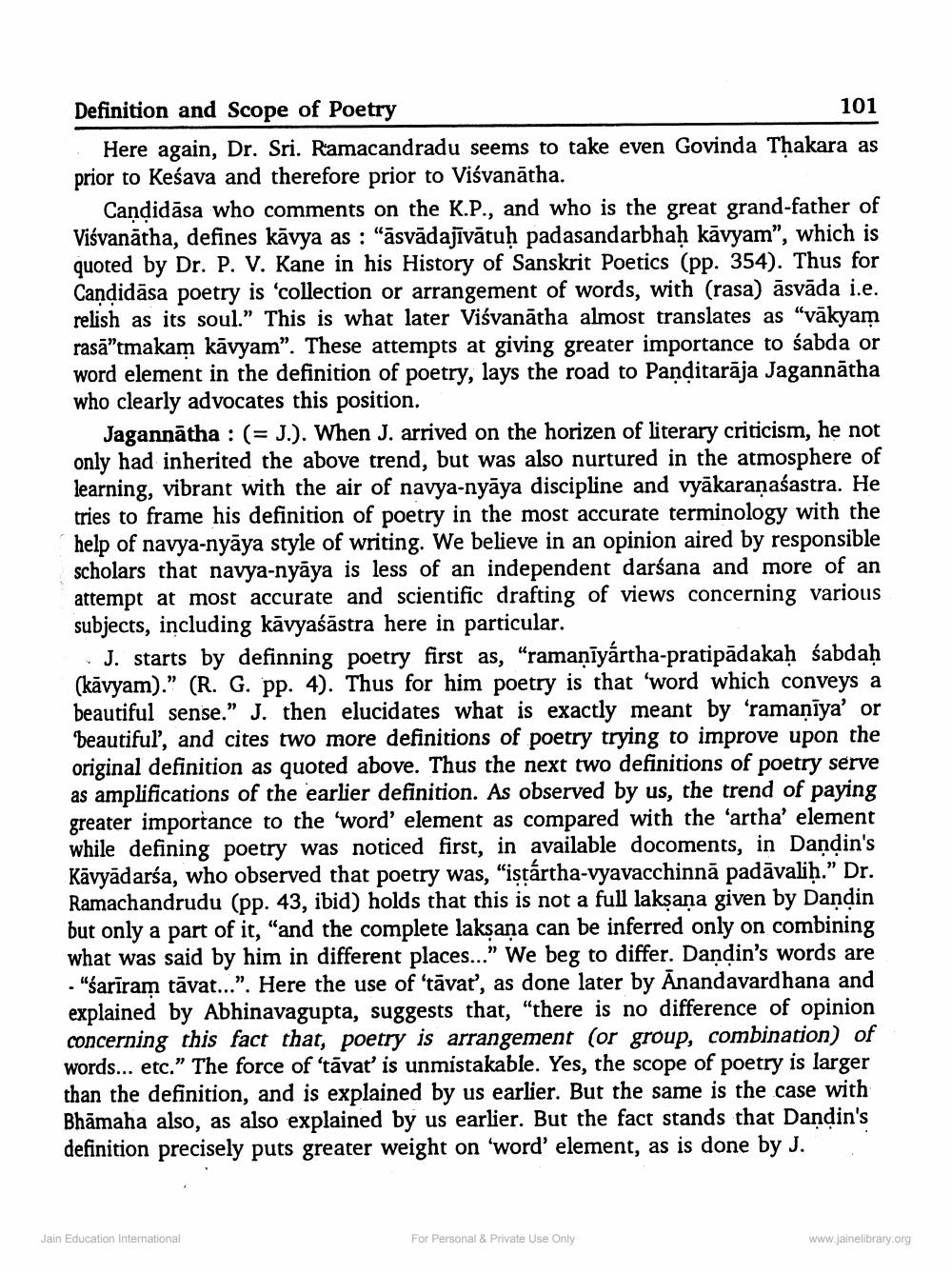________________
Definition and Scope of Poetry
101 Here again, Dr. Sri. Ramacandradu seems to take even Govinda Thakara as prior to Keśava and therefore prior to Viśvanātha.
Candidāsa who comments on the K.P., and who is the great grand-father of Viśvanātha, defines kāvya as : "āsvādajīvātuh padasandarbhah kāvyam", which is quoted by Dr. P. V. Kane in his History of Sanskrit Poetics (pp. 354). Thus for Candidāsa poetry is 'collection or arrangement of words, with (rasa) āsvāda i.e. relish as its soul.” This is what later Visvanātha almost translates as "vākyam rasā"tmakam kavyam". These attempts at giving greater importance to śabda or word element in the definition of poetry, lays the road to Panditarāja Jagannatha who clearly advocates this position.
Jagannātha :(= J.). When J. arrived on the horizen of literary criticism, he not only had inherited the above trend, but was also nurtured in the atmosphere of learning, vibrant with the air of navya-nyāya discipline and vyākaranaśastra. He tries to frame his definition of poetry in the most accurate terminology with the help of navya-nyāya style of writing. We believe in an opinion aired by responsible scholars that navya-nyaya is less of an independent darśana and more of an attempt at most accurate and scientific drafting of views concerning various subjects, including kävyaśāstra here in particular.
J. starts by definning poetry first as, “ramanīyártha-pratipādakaḥ śabdaḥ (kāvyam).” (R. G. pp. 4). Thus for him poetry is that 'word which conveys a beautiful sense.” J. then elucidates what is exactly meant by 'ramaniya' or beautiful, and cites two more definitions of poetry trying to improve upon the original definition as quoted above. Thus the next two definitions of poetry serve as amplifications of the earlier definition. As observed by us, the trend of paying greater importance to the 'word' element as compared with the 'artha' element while defining poetry was noticed first, in available docoments, in Dandin's Kävyādarśa, who observed that poetry was, "istártha-vyavacchinnā padāvalih.” Dr. Ramachandrudu (pp. 43, ibid) holds that this is not a full laksana given by Dandin but only a part of it, "and the complete laksana can be inferred only on combining what was said by him in different places..." We beg to differ. Dandin's words are - "śarīram tāvat...”. Here the use of 'tāvat', as done later by Anandavardhana and explained by Abhinavagupta, suggests that, "there is no difference of opinion concerning this fact that, poetry is arrangement (or group, combination) of words... etc." The force of 'tavat' is unmistakable. Yes, the scope of poetry is larger than the definition, and is explained by us earlier. But the same is the case with
as also explained by us earlier. But the fact stands that Dandin's definition precisely puts greater weight on 'word' element, as is done by J.
Jain Education International
For Personal & Private Use Only
www.jainelibrary.org




